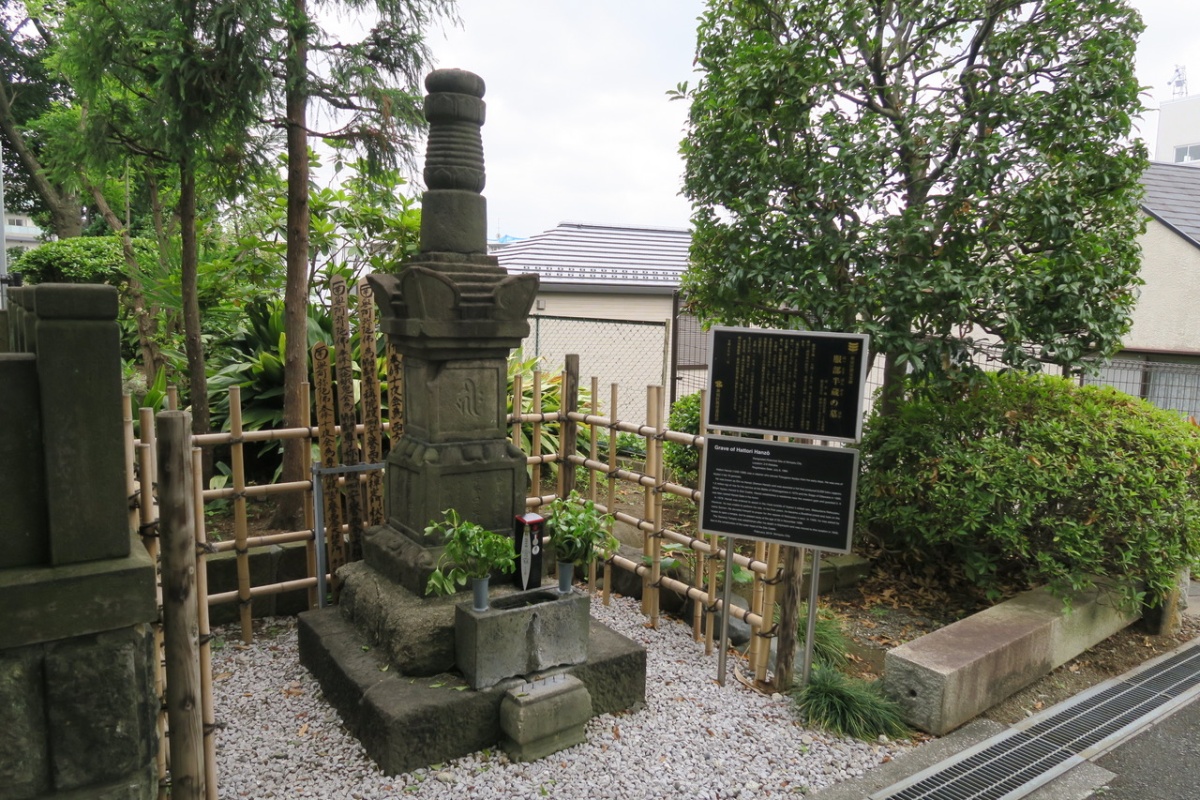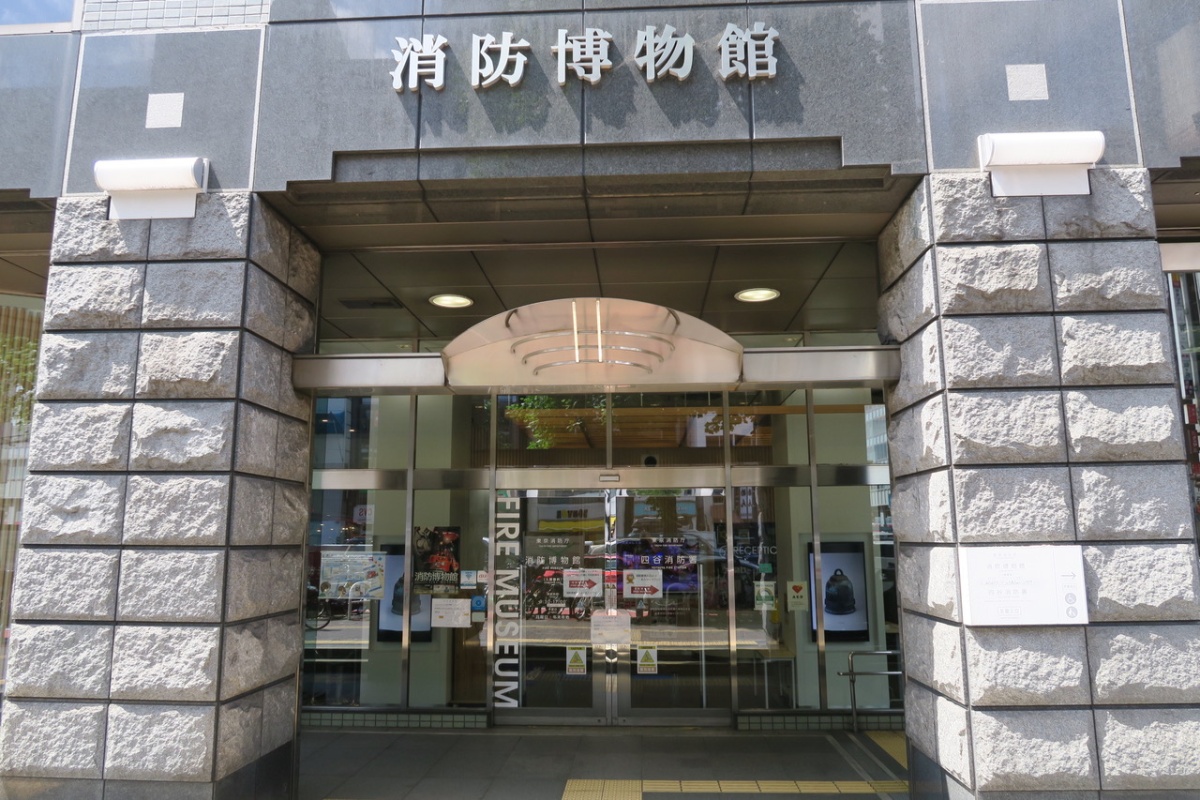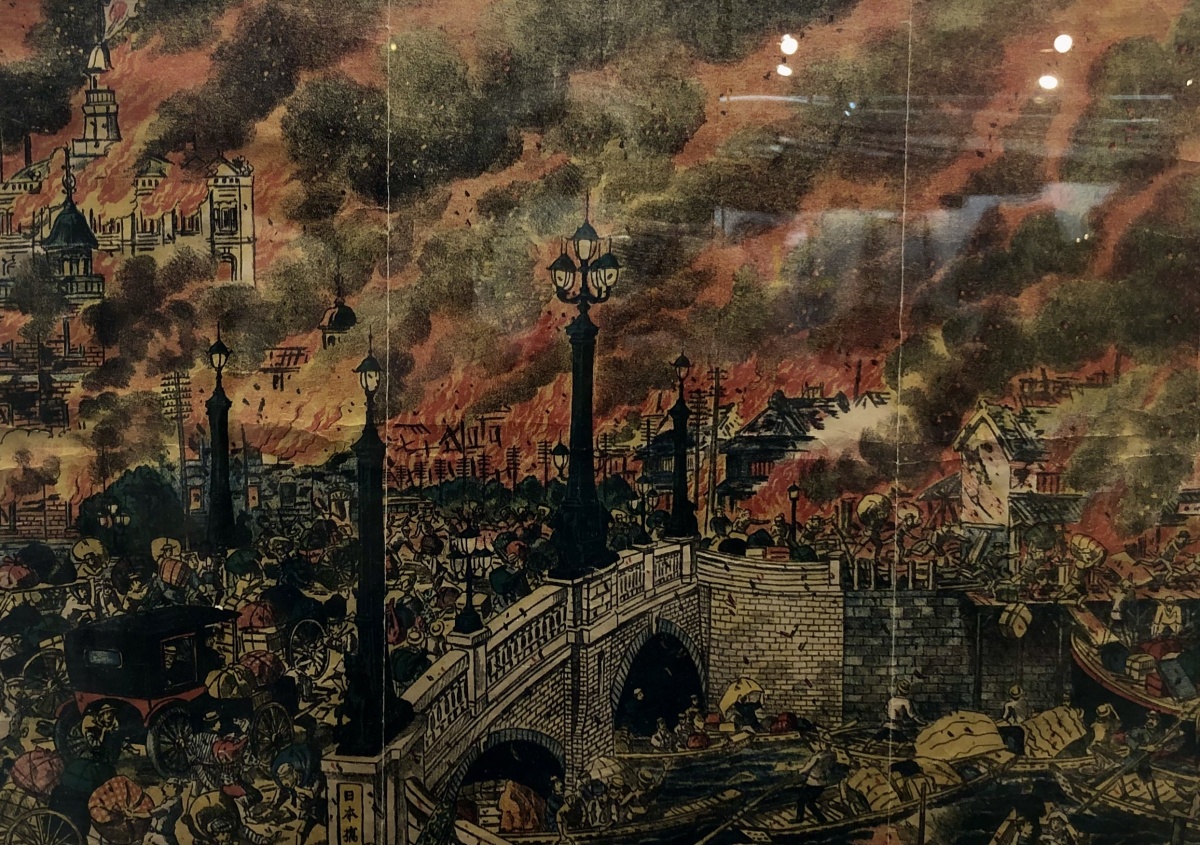A Walk Through Tokyo History: Yotsuya to Shinjuku on the Koshu Kaido Road

The Koshu Kaido was one of five major routes that linked Japan's capital city of Edo with the provinces. Following is a walking guide to the historical sites that can be found along its original route in the center of Tokyo. Discover some sites of Tokyo's fascinating past and learn some of its secrets on this easy walk through history.
By Mark Schreiber
Ivy-covered guardrail of the Yotsuya Mitsuke Bridge dated 1913 (2nd year of Taisho).
"The main thrust of the city, as it spilled over its limits in late Meiji [around the late 19th and early 20th centuries] was directly to the west, past Yotsuya to Shinjuku." So wrote historian Edward Seidensticker in his monumental and highly recommended tale of Tokyo, Low City, High City.
Your westward walk begins from Yotsuya Station, served by the Marunouchi subway line or the Chuo or Sobu railway lines. From the subway station, cross the Yotsuya Mitsuke Bashi bridge so that you're kitty corner from the Sophia University's St. Ignatius Church. If you come by railway, take the escalator at the JR Kojimachi exit to street level. Look over to your left and you'll see a weathered section of large stones, about 10 meters in length. This is all that remains of the old Yotsuya Mitsuke, the gate by the bridge that spanned the exterior moat of Edo castle. The stones are bit neglected but still solid and imposing, and hopefully a new budget will be provided to give it a much-deserved facelift.

This small section of stones is all that remains of the Yotsuya Mitsuke gate at Edo castle's outer moat, now used for trains.

Some of the bilingual panels at JR's Yotsuya Station display.
In June 2020, East Japan Railways opened a display corner in Yotsuya Station, with explanatory bilingual panels. It's downstairs, at the foot of the escalator on the Kojimachiguchi (East) side. It can also be accessed from the Yotsuguchi on the station's west side.
The panels show the evolution of the area with emphasis on its waterways and railways, which presently run through what was formerly the sotobori (exterior moat).
The Grave of a Ninja Warrior

Unlike the four other Kaido that connected Edo with the provinces from Nihombashi, Koshu Kaido is the only road that terminates (or originates) at the Hanzomon Gate of the castle (now the imperial palace), situated 1.4 kilometers to the east from Yotsuya. The gate honors Hattori Hanzo, a close Tokugawa ally (described in some accounts as Ieyasu's bodyguard) who headed a brigade of ninja warriors from Iga, in what is now Mie Prefecture.
Although Hattori died in 1596, a half decade before Ieyasu united the country under the 250-year Tokugawa dynasty, he was honored by the castle gate that bears his name.

Hattori Hanzo, who helped Tokugawa Ieyasu gain control of Japan. (Wikipedia Commons)
Hanzo is buried not far from Yotsuya, at the Sainenji temple. (2-9 Wakaba, Shinkuku-ku) After crossing the bridge, walk on the left side of Koshu Kaido and turn left down the 3rd street past the Yotsuya crossing (just past a Family Mart convenience store). Then walk about 150 meters, deviating slightly to the left at a T-junction. The Sainenji is just beyond. Proceed straight through its gate and pass the main hall on your left. Hattori's grave is on the left.
If you climb the steps to the main hall you can peek through the glass doors and catch a glimpse of Hattori's legendary spear on the floor of the tokonoma, just to the left of the gilt Buddhist statuary.
Area Artifacts from Prehistoric to Modern Times at the Shinjuku Historical Museum

Walk back to Shinjuku Dori, cross it, and turn westward, away from Yotsuya, until you see Japanese and English signs (pointing to the right) to the Shinjuku Tax office and Shinjuku Historical Museum. The Historical Museum is about 120 meters straight down the street, just beyond a large playground. After entering (adult admission ¥300), descend to the basement to view the exhibits, starting with artifacts from the area's first human inhabitants that date back some 12,000 years. There are restored homes, rooms, a tram car and a model of how Shinjuku appeared in medieval times.
Shinjuku Historical Museum
12-16 Yotsuya Saneicho
Shinjuku, Tokyo
03-3359-2131
Open daily: 9:30am to 5:30pm
Website: in Japanese
https://www.regasu-shinjuku.or.jp/rekihaku/

A diorama of the Koshu Kaido road and environs during the Edo Period. Note the man-made aqueduct on the right.

Literary exhibits include sketches and notes by Lafcadio Hearn (left) and a model of novelist Soseki Natsume's home and writing space (right)
The museum takes particular pride in how, from the late 19th century, Shinjuku became a cultural nexus for some of Japan's most famous authors. Residents at one time or another included Soseki Natsume (1867–1916), Kafu Nagai (1879–1959), Ryunosuke Akutagawa (1892–1927), Osamu Daizai (1909–1948), and Irish-Greek author Lafcadio Hearn (1850–1904).
The Great Kanto Earthquake in September 1923 and air raids in 1945 caused devastation, but as the exhibits demonstrate, Shinjuku was quick to recover and resume its westward growth. For the past century it's served as a magnet, attracting Tokyoites to its culture, cuisine and many forms of stimulation.
And Now, for Something Really Scary!
Now, are you ready for a ghost story? Upon reaching the Yotsuya Sanchome intersection, cross Shinjuku Dori and proceed south, in the direction of the Sendagaya and the Keio University Hospital. Take the next left after the Yotsuya Police Station. This street will take you to a T-junction where you turn right. From there, you are about a three-minute walk from two very different shrines commemorating the victim of the Tokaido Yotsuya Kaidan, a scary Kabuki drama from the 1820s.

Detail from a woodblock print by Utagawa Kuniyoshi: A scene from the play, “Ghost of Oiwa” (Yotsuya Kaidan)
The story itself, about greed, murder and retribution at the hands of the victim's angry spirit, is indeed dramatic, and many a member of the audience back in the early 19th century left the theater with their foreheads beaded with cold sweat and goose bumps on their skin. The story's details can be read here:
https://en.wikipedia.org/wiki/Yotsuya_Kaidan
The unattended Oiwa shrine (located at 17 Samon-cho, Shinjuku-ku) on the right is a bit gloomy and just barely borders on the spooky. A few meters down and across the street is another shrine, which has been touched by the magic wand of commercialism. Clean and well-maintained, it offers sales of various snacks and talismans in a cozy, quite attractive setting that takes the edge off any ghostly haunting.

Walk back to the Yotsuya 3-chome intersection, where a large gray building at the northwest corner contains the Yotsuya fire station and the Yotsuya Fire Museum.
Tokyo Fire Department Firefighting and Disaster Prevention Reference Center
3-10 Yotsuya, Shinjuku-ku, Tokyo 160-0004
Admission free
Open Tuesday to Sunday from 9.30am to 5pm, closed on Mondays and over the New Year period (December 28th to January 4th)
Website:
https://www.tfd.metro.tokyo.lg.jp/eng/e_museum.html
A City not Unlike a Tinderbox Needed Dedicated Protectors

A scene from a huge diorama on the fifth floor of the museum, showing the aftermath of fires on the wooden city of Edo.
The city of Edo, Tokyo's predecessor prior to 1868, was a notorious firetrap, with a high population density and buildings of wood and other natural materials. Conflagrations occurred so frequently, they became referred to as "Edo no Hana" (flowers of Edo), and these are well documented in the Fire Museum. Exhibits, in reverse chronological order from the 5th, 4th and 3rd floors, document the authorities' efforts to minimize fire damage through watchtowers, volunteer fire brigades, widening of streets and other measures.

A magazine illustration of the fire that engulfed Tokyo after a massive earthquake on Sept. 1, 1923
Along with displays of firemen's protective clothing and woodblock prints depicting famous disasters are primitive hand pumps and a wooden chest on wheels, which facilitated the wealthy to roll their valuables out of a burning house. Also on display was an actual rescue ladder from the 8-story Shirokiya Department Store fire of December 16, 1932 — believed caused by an electrical spark from a light bulb on a Christmas tree — which left 14 people dead and dozens injured.
"The aqueduct ran a distance of 43 kilometers, and was completed in only eight months, built using stones and wooden gutters and harnessing gravity."

Next, proceed westward along Shinjuku Dori and you'll soon approach a large vehicular tunnel. The tunnel was once the channel for the Tamagawa Josui, an aqueduct that was one of the sources of Edo’s water supply. A large stone monument commemorates the two brothers credited with the construction of the aqueduct. Running eastward from Hamura in West Tokyo to Yotsuya, a distance of 43 kilometers, it was completed in only eight months, built using stones and wooden gutters and harnessing gravity in the form of a 92-meter decline in elevation over its total length. The channel supplied water to parts of the city for almost 240 years, until replaced by more modern waterworks 1901.
Behind the monument is a marker indicating the location of the Yotsuya Ookido, one of Edo's gates. As security was relaxed it was finally removed 1792, but its name was retained.
One of Tokyo's Best Gardens

Old gate (not in use) at entrance to Shinjuku Imperial Gardens. The actual entrance is beyond this point.
Just past the corner of the large building housing the Shinjuku Water Bureau and a public library look to your left, and you can see the old entrance gate to the Shinjuku Gyoen National Garden. (The actual ticket gate is about 40 meters beyond that.)
Shinjuku Gyoen National Garden
https://www.env.go.jp/garden/shinjukugyoen/english/index.html
Opening hours are from 9:00 am to 5:30 pm (Gates close at 6:00 pm) but may change. Closed Mondays. Admission is ¥500 for adults, and ¥250 for seniors over 65 and students.

Until 1879 this huge garden was formerly the estate of the Naito clan, an ally of the Tokugawa, and also the namesake of the district's original name, Naito-Shinjuku. The gardens were finally opened to the public in 1949.
Just inside the gate is an attractive Japanese-style garden with pond and stone lantern. Here, you can enjoy a cold drink from a vending machine and relax before resuming your walk.
Back on Shinjuku Dori, continue walking straight until you come to the Isetan Department store at Shinjuku 3-chome. Turning left from there is only a short walk to the Tenryuji temple, whose oidashi no kane (drive-out bell) was rung early to awaken those overnighting at the area's inns (most of which were houses of ill repute) clustered outside the Ookido Gate. The bell's still there, atop a platform with an explanatory signboard (alas, in Japanese only).

Our journey ends by the east exit of Shinjuku Station where the road splits into Koshu Kaido and Ome Kaido, and where the journey was just beginning for people heading out to the provinces hundreds of years ago. Here is the Uma Suiso, a horse watering trough that was originally a gift to Tokyo from the City of London in 1906. It was moved here from its original location in central Tokyo around the time of the 1964 Olympic games and has become a popular rendezvous spot.
Shinjuku Now and Then

Left: photo of Shinjuku by Ryoji Iwata; Right: Diorama at the Shinjuku Historical Museum
The next time you walk on Tokyo's streets, stop, take a moment, and look around. Tokyo's memories are enshrined in many sites amongst all the modern buildings and busy crowds of people. All it takes to follow a trail down memory lane is knowing where and how to look.



